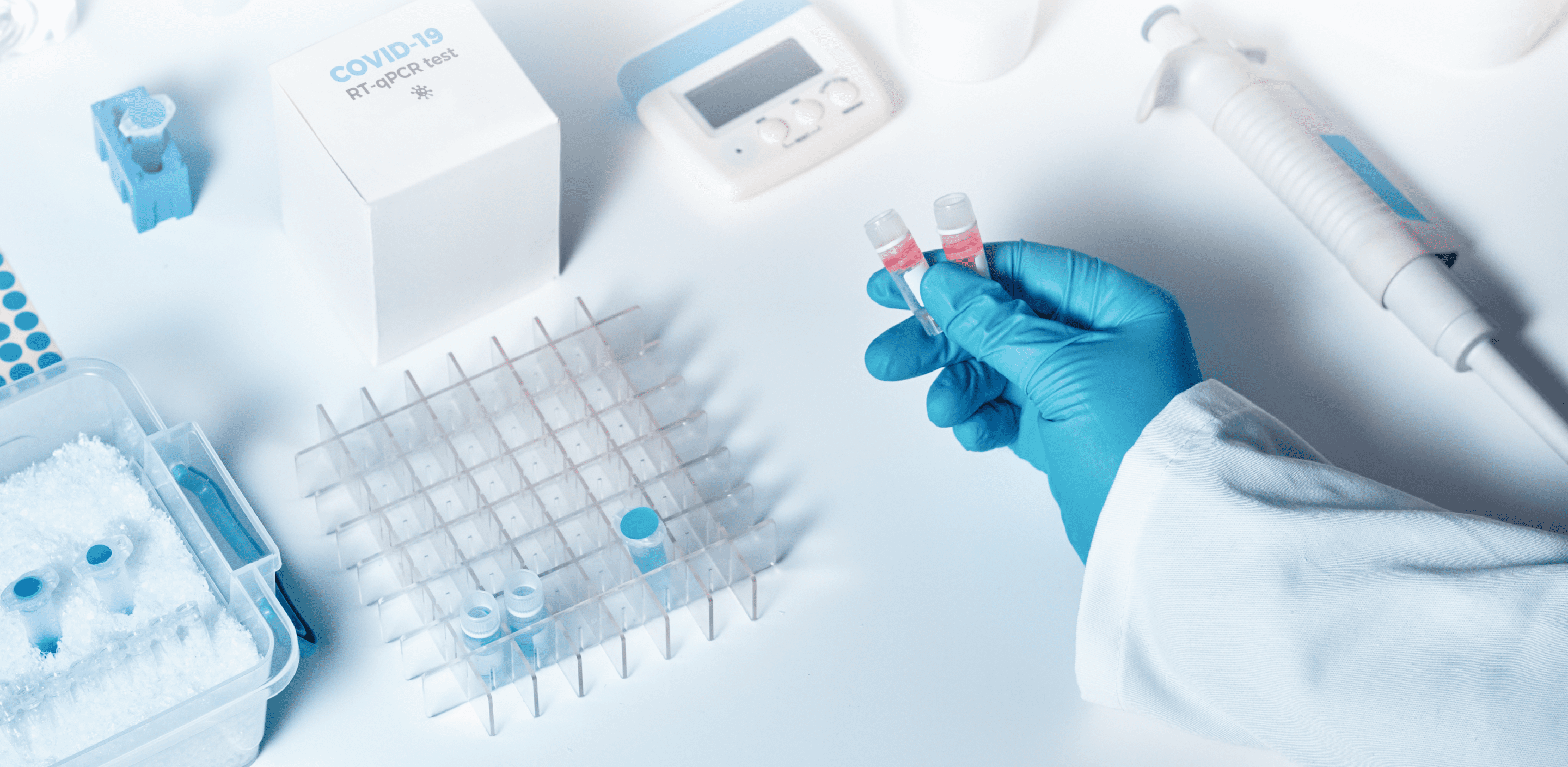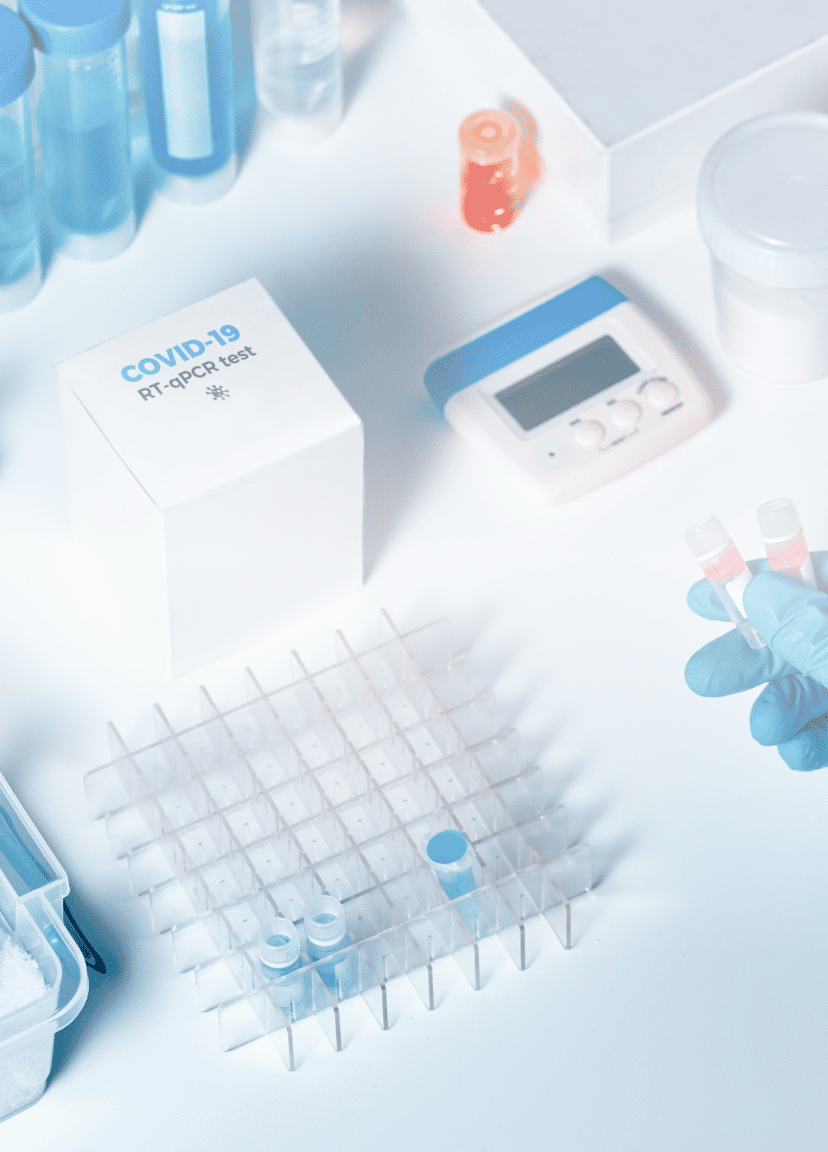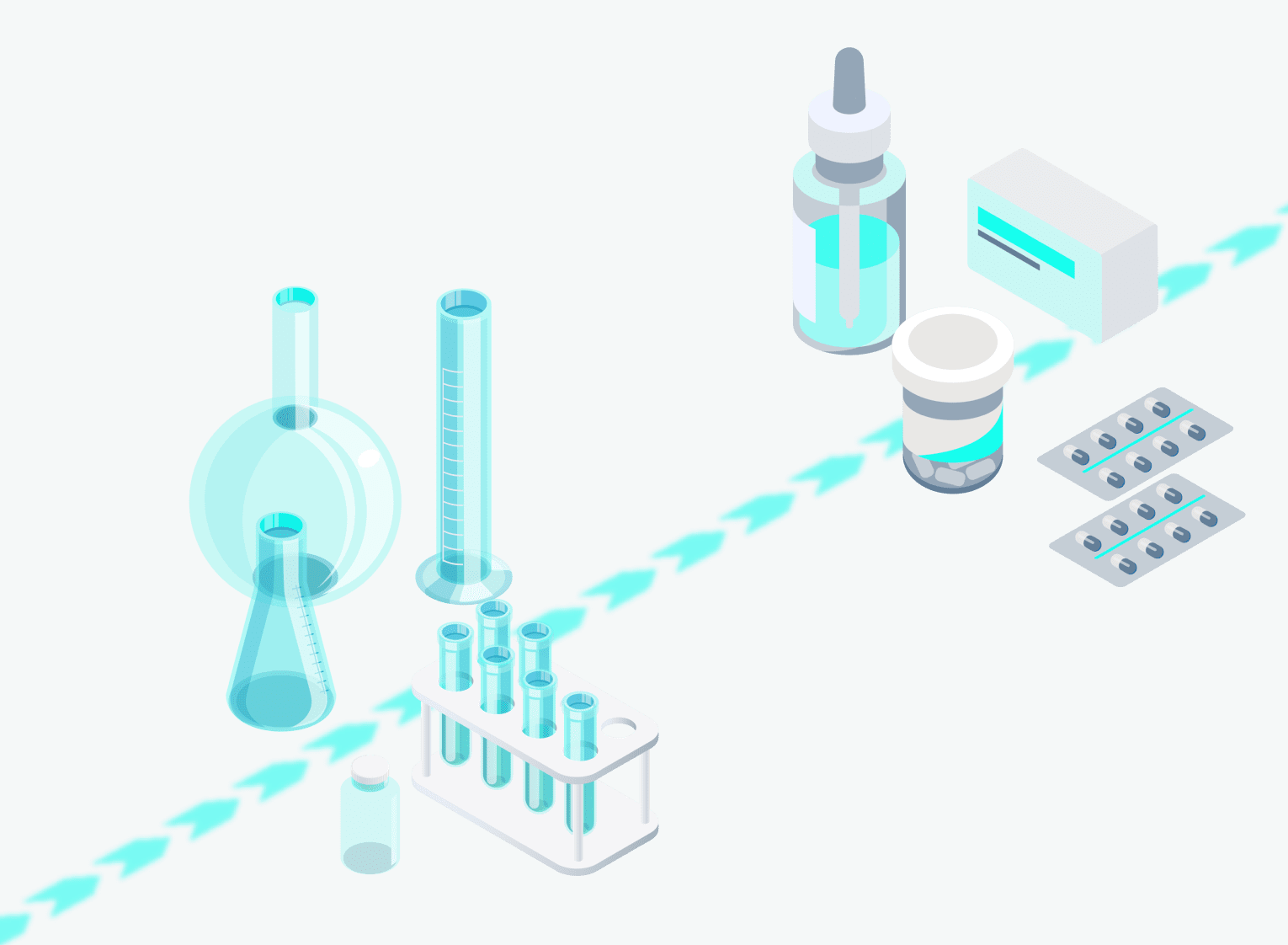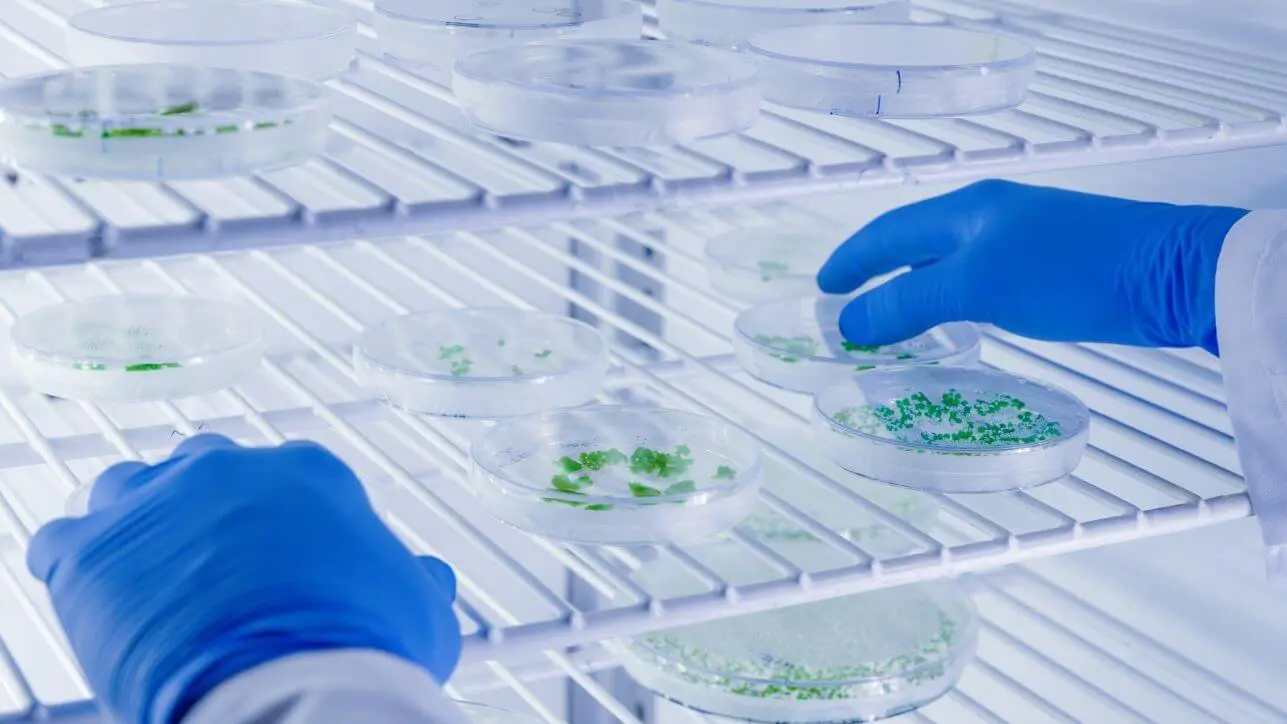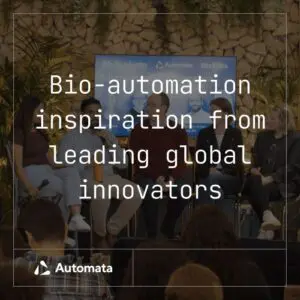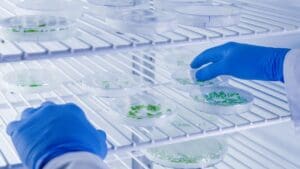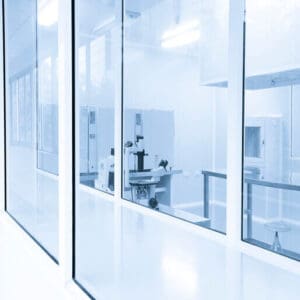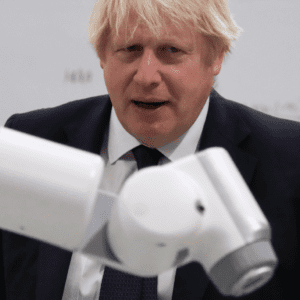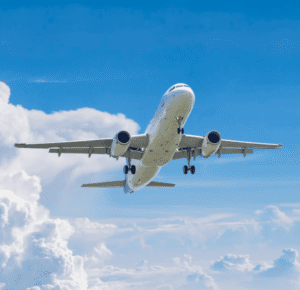The benefits of cloud-first lab automation platforms
12 July 2024
Cloud-first lab automation provides superior benefits to modern labs vs on-site solutions....
Read more The benefits of cloud-first lab automation platforms
Bio-automation inspiration from leading global innovators
20 June 2024
Discover what leading biotech innovators shared at our recent event, Advances in...
Read more Bio-automation inspiration from leading global innovators
Automation in cancer genome sequencing
10 June 2024
From diagnosis to treatment, new technologies are revolutionising scientists' approach to cancer...
Read more Automation in cancer genome sequencing
SLAS Europe wrapped for another year
6 June 2024
SLAS Europe is wrapped for another year. It was great to see...
Read more SLAS Europe wrapped for another year
Common errors in manual ELISA assays and how automation can help
4 June 2024
Discover the frequent mistakes made during manual ELISA assays and how automation...
Read more Common errors in manual ELISA assays and how automation can help
Should I purchase my lab equipment with OPEX or CAPEX budget?
24 May 2024
Flexibility is crucial for future-proofed automation solutions. Here are five reasons why
Read more Should I purchase my lab equipment with OPEX or CAPEX budget?
The future of genome editing in agriculture
10 May 2024
We look at the applications of genome-editing in agriculture, and the role...
Read more The future of genome editing in agriculture
Bench to bedside: what is translational research, and how can automation help?
10 May 2024
Learn how open integrated automation can transform translational research, helping labs to...
Read more Bench to bedside: what is translational research, and how can automation help?
Automation in microbiology
7 May 2024
Learn how open, integrated automation can streamline microbiology lab processes, overcome challenges...
Read more Automation in microbiology
Tips for contract labs: sourcing future-proofed automation solutions
1 May 2024
Tips to help CROs and CDMOs when sourcing future-proofed automation solutions that...
Read more Tips for contract labs: sourcing future-proofed automation solutions
Five reasons flexibility needs to be a standard feature of automation solutions
25 March 2024
Flexibility is crucial for future-proofed automation solutions. Here are five reasons why
Read more Five reasons flexibility needs to be a standard feature of automation solutions
Achieving high throughput proteomics with automation
16 March 2024
Discover how open integrated automation can transform proteomics sample preparation, helping labs...
Read more Achieving high throughput proteomics with automation
Data and reproducibility: creating a single source of truth for your lab
5 March 2024
How can lab automation help ensure that the data we generate now...
Read more Data and reproducibility: creating a single source of truth for your lab
Tackling flexibility
5 March 2024
This blog explores why flexibility in lab automation is so difficult to...
Read more Tackling flexibility
Balancing usability and functionality
5 March 2024
Why is lab automation so hard to use? And why does it...
Read more Balancing usability and functionality
Making error handling better
5 March 2024
Discover how automation platforms like LINQ handle errors to improve trust and...
Read more Making error handling better
Dynamic replanning: a new way to schedule workflows and why it matters
8 February 2024
Intelligent experiment scheduling can make or break productivity in a lab and...
Read more Dynamic replanning: a new way to schedule workflows and why it matters
What are laboratory workflows?
16 January 2024
Learn how to simplify your workflows and boost your lab’s efficiency, for...
Read more What are laboratory workflows?
SLAS conference tips and Boston science tourism
13 December 2023
Automata's top tips for getting the most out of your #SLAS24 experience...
Read more SLAS conference tips and Boston science tourism
From robot arms to automation platforms: the future of lab tech
3 October 2023
Since the last time we talked, Automata and our customers have achieved...
Read more From robot arms to automation platforms: the future of lab tech
Plant tissue culture: how automation can help
26 September 2023
We explore common problems in plus the advantages and disadvantages of plant...
Read more Plant tissue culture: how automation can help
CRISPR in agriculture: applications, benefits & risks
6 September 2023
Gene-editing technology such as CRISPR could be the future of agriculture. We...
Read more CRISPR in agriculture: applications, benefits & risks
Scaling up ELISA development with automation
6 September 2023
Find out how open, integrated automation can accelerate the ELISA development process...
Read more Scaling up ELISA development with automation
Agrigenomics: the role of automation
6 September 2023
Genomics is transforming the future of agriculture. Learn how open, integrated automation...
Read more Agrigenomics: the role of automation
Automata and The Francis Crick Institute seek molecular biologist for an exciting new project
7 August 2023
The Crick is now looking for a Senior Laboratory Scientist to work...
Read more Automata and The Francis Crick Institute seek molecular biologist for an exciting new project
Preparing reagents: how automation can help
11 July 2023
Proper reagent preparation is key to experimental success. Find out how automated...
Read more Preparing reagents: how automation can help
What are cloud labs in life science?
11 July 2023
Automated, remote-operated cloud laboratories allow researchers to run experiments 24/7. We look...
Read more What are cloud labs in life science?
Automated cell culture incubation
11 July 2023
Discover how automated cell culture incubators can scale your cell biology workflows,...
Read more Automated cell culture incubation
How to automate your chemistry lab
11 July 2023
Discover how open, integrated automation can streamline common processes in clinical labs,...
Read more How to automate your chemistry lab
ELISA assay validation: how automation can help
11 July 2023
Find out how open, integrated automation can accelerate the ELISA validation process...
Read more ELISA assay validation: how automation can help
What is open, integrated automation
12 June 2023
OIA is a design and development principle that promises to revolutionise the...
Read more What is open, integrated automation
How to ensure lab reproducibility with automation
16 May 2023
Explore the value of reproducibility in the lab, and how automation can...
Read more How to ensure lab reproducibility with automation
Five ways we redesigned the lab bench for automation
15 May 2023
How we reimagined the lab bench for automation.
Read more Five ways we redesigned the lab bench for automation
How to improve turnaround time in the lab
30 March 2023
Discover how lab turnaround time can be reduced through automation, without compromising...
Read more How to improve turnaround time in the lab
Maintaining cell lines with automation
30 March 2023
Discover how automation can facilitate repetitive maintenance of cell line processes, enhancing...
Read more Maintaining cell lines with automation
Unlocking the potential of 3D cell cultures with automation
29 March 2023
Discover the advantages of automated liquid handling in cell culture, from reduced...
Read more Unlocking the potential of 3D cell cultures with automation
Unlocking the power of people in your lab
21 February 2023
By utilising the power of open, integrated automation solutions lab technicians can...
Read more Unlocking the power of people in your lab
How to unlock the space in your lab
3 February 2023
By utilising the power of open, integrated automation solutions lab technicians can...
Read more How to unlock the space in your lab
Unlock the potential of your science lab with automation
30 January 2023
Imagine what potential could look like for your science lab if you...
Read more Unlock the potential of your science lab with automation
Challenges of working with genetically edited cells
23 November 2022
Sonia Jassi, Drug Discovery and Synthetic Biology Lead at Automata, examines how gene...
Read more Challenges of working with genetically edited cells
Improving NGS library prep with automation
16 November 2022
Discover how you can reduce time-intensive processes, improve data quality and optimise...
Read more Improving NGS library prep with automation
How to improve laboratory productivity
16 November 2022
Discover how you can supercharge your lab’s productivity, increase efficiency and save...
Read more How to improve laboratory productivity
How to ensure quality control in a lab
16 November 2022
Learn how you can optimise common lab quality control processes through automation,...
Read more How to ensure quality control in a lab
What is lab 4.0?
16 November 2022
Lab 4.0 technologies allow laboratories to unlock their potential through digital transformation...
Read more What is lab 4.0?
Benefits of automated liquid handling in cell culture
16 November 2022
Discover the advantages of automated liquid handling in cell culture, from reduced...
Read more Benefits of automated liquid handling in cell culture
Becoming a smart lab: the three stages
7 October 2022
The steps for finding the lab automation solution that's the right fit...
Read more Becoming a smart lab: the three stages
Four methods for enhancing automation in your lab
3 October 2022
Automation is still widely underutilised in the lab space. Here are our...
Read more Four methods for enhancing automation in your lab
Applying automation lessons from manufacturing in the lab
26 September 2022
How the lessons we learned from manufacturing automation can help supercharge your...
Read more Applying automation lessons from manufacturing in the lab
Industry insider: takeaways from SmartLabs UK 2022
14 September 2022
Integrating data from the offset and LEGO lab automation: Here’s what I...
Read more Industry insider: takeaways from SmartLabs UK 2022
The four biggest trends in lab automation this year
25 July 2022
Russell Green, Director of Product Growth at Automata outlines the four biggest...
Read more The four biggest trends in lab automation this year
3 key themes from Future Food-Tech Alternative Proteins Summit
15 July 2022
Find out what some of the biggest themes and challenges are within...
Read more 3 key themes from Future Food-Tech Alternative Proteins Summit
How to better utilise staff in cell culture labs
22 June 2022
Cell culture labs are labour intensive which can contribute to a poor...
Read more How to better utilise staff in cell culture labs
Quick automation wins in mammalian cell culture
22 June 2022
Automating mammalian cell culture can improve the scale and quality of results...
Read more Quick automation wins in mammalian cell culture
SLAS Europe 2022: five key trends in lab automation
26 May 2022
Our round up of the latest innovations and trends in the lab...
Read more SLAS Europe 2022: five key trends in lab automation
Improving cell culture quality
10 May 2022
As cell cultures become more advanced, optimising culture quality is more important...
Read more Improving cell culture quality
Scaling cell culture processes
20 April 2022
As demand for cell culture increases, labs are under pressure to scale...
Read more Scaling cell culture processes
Unlocking the potential of genomic sequencing
10 March 2022
Genomic sequencing will revolutionise healthcare over the next decade. We take a...
Read more Unlocking the potential of genomic sequencing
Common sources of error in biology lab experiments
4 March 2022
We look at what causes errors in biology lab experiments and how...
Read more Common sources of error in biology lab experiments
Human error in colony counting in a clonogenic assay
3 March 2022
Manual colony counting is repetitive and error-prone, but, with automation, it can...
Read more Human error in colony counting in a clonogenic assay
How to reduce downtime in a drug discovery lab
23 February 2022
Downtime in drug discovery labs delay an already long and complex process....
Read more How to reduce downtime in a drug discovery lab
How automated labs can improve information gathering
11 February 2022
With collating data never more important, automation offers a unique opportunity to...
Read more How automated labs can improve information gathering
Investigating lab automation in early drug discovery
4 February 2022
Rapidly developing breakthrough treatments at pace is critical. We investigate the benefits...
Read more Investigating lab automation in early drug discovery
How automating labs can improve PCR testing capacity, accuracy and speed
11 January 2022
With the reliance on PCR testing set to continue, automation offers an...
Read more How automating labs can improve PCR testing capacity, accuracy and speed
How automation prevents human error in the laboratory
7 January 2022
Despite protections, human error in labs still leads to incorrect diagnostics and...
Read more How automation prevents human error in the laboratory
How to select the right lab automation partner
15 December 2021
Investing in lab automation in 2022? Here are the best practices for...
Read more How to select the right lab automation partner
Seven steps for increasing efficiency in diagnostics
8 December 2021
Explore the many methods diagnostics labs can employ to improve efficiency in...
Read more Seven steps for increasing efficiency in diagnostics
Diagnostic automation key for NHS to ‘build back better’
2 December 2021
Government and industry have an opportunity to revolutionise diagnostics in the UK:...
Read more Diagnostic automation key for NHS to ‘build back better’
How to automate diagnostics processes
29 November 2021
ab automation in diagnostics can help labs scale testing, improve speed and...
Read more How to automate diagnostics processes
What is laboratory workflow automation in diagnostic testing?
11 November 2021
Laboratory workflow automation links multiple lab automation technologies to automate entire diagnostic...
Read more What is laboratory workflow automation in diagnostic testing?
The benefits of lab automation for diagnostic testing
2 November 2021
Lab automation technologies reduce the pressure on repetitive tasks, increase productivity and...
Read more The benefits of lab automation for diagnostic testing
Ensuring quality in laboratory diagnostics
19 October 2021
Quality in lab diagnostics is critical. We explore methods of ensuring quality...
Read more Ensuring quality in laboratory diagnostics
Is this the end of fit to fly COVID-19 PCR tests?
19 October 2021
The UK government’s U-turn on fit to fly PCR tests has brought...
Read more Is this the end of fit to fly COVID-19 PCR tests?
Which lab processes can be automated today?
19 October 2021
Read more Which lab processes can be automated today?
